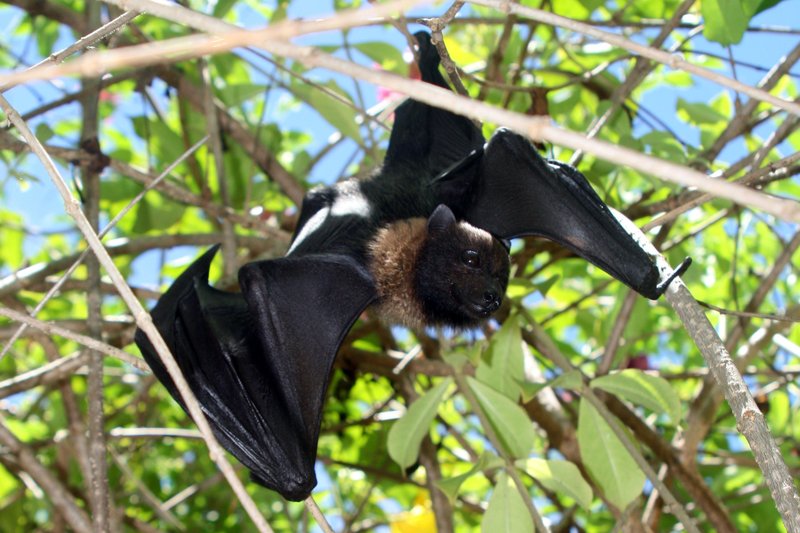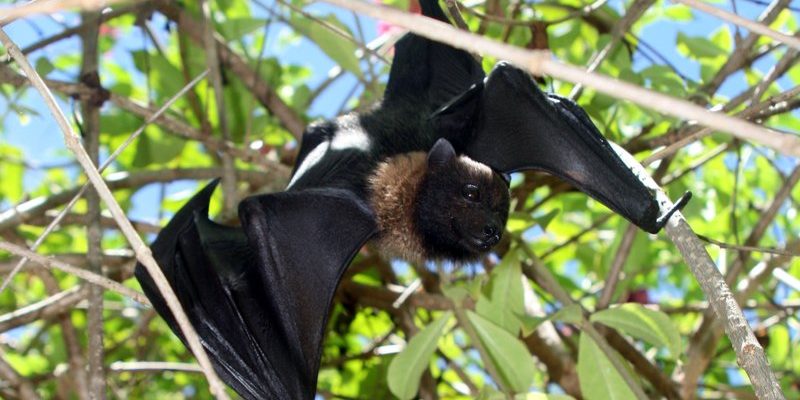
First off, don’t panic. Encountering a fruit bat might feel intimidating, but they’re generally harmless to humans. Just like you might feel a bit nervous when meeting someone new, fruit bats are often more interested in their surroundings than in you. Let’s dive into the best ways to handle this unexpected encounter, ensuring both your safety and the bat’s well-being.
Understanding Fruit Bats
Before we jump into action steps, it’s helpful to know a bit about fruit bats. These creatures, also known as flying foxes, are among the largest bats in the world. They can have wingspans of up to six feet! Unlike their insect-eating counterparts, fruit bats primarily feed on… you guessed it—fruit! Think of them as the gardeners of the night, helping to keep our forests healthy.
Their large eyes, which look a bit like those of a dog, give them excellent night vision. They rely on their keen sense of smell to find ripe fruit. One interesting fact is that fruit bats can travel long distances in search of food. Imagine them soaring across the sky, like little pilots scouting for their next meal.
Stay Calm and Observe
If you encounter a fruit bat in the wild, the first thing to do is stay calm. Honest talk? They’re usually more interested in munching on fruit than interacting with you. Take a moment to observe the bat from a safe distance. Keep in mind that most bats are nocturnal, so spotting one during the day can mean it’s resting or sick.
Try to note its behavior. Is it hanging upside down or moving around? If the bat is not showing any signs of aggression, you can relax a bit. They have no reason to attack unless they feel threatened. Just think of them like a shy person at a party—more likely to retreat than confront.
Give It Space
One of the best things you can do when encountering a fruit bat is to give it space. Approach with caution and don’t invade its territory. You wouldn’t want someone to crowd your personal space, right? Stand still and allow the bat to feel safe.
If you’re taking photos or just watching, keep your distance. About 20–30 feet away is generally a safe bet. This way, you respect its habitat while enjoying the moment. If the bat appears distressed or starts flapping its wings aggressively, back away slowly. It’s just like giving a wild animal its room—no need to startle it further.
Don’t Attempt to Touch or Handle the Bat
Here’s the thing: don’t attempt to touch or handle the bat. Even though they look cute and harmless, bats can carry diseases, including rabies. And remember, they’re wild animals that aren’t accustomed to human interaction. They might see your approach as a threat.
If the bat seems injured or in distress, it’s best to call a local wildlife rescue organization. These professionals have the training and tools to help the bat safely. Trying to intervene yourself might make things worse for both you and the bat. Imagine trying to nurse a wild animal back to health—it’s not an easy job, and it’s best left to the experts.
Know When to Seek Help
Sometimes, you might need to seek help. If the bat appears to be in trouble—whether it’s hanging awkwardly or can’t fly—don’t hesitate to reach out for assistance. Local wildlife rehabilitators or animal control officers are trained to handle such situations.
Before you contact someone, gather some quick information about the bat’s condition. Is it hanging on the ground, or stuck somewhere? This information can be super helpful for anyone trying to assist. You’d want to know the details if someone asked you to help, right?
Educate Yourself About Fruit Bats
Knowledge is power! Taking the time to educate yourself about fruit bats can enhance your appreciation for these creatures. There are many resources available online, from articles to documentary films. You’ll learn that fruit bats are essential for our ecosystems, especially in tropical areas where they help with pollination and seed dispersal.
Understanding their role in the environment can give you a whole new perspective. Next time you see one, you might think of them as nature’s helpers rather than just a creature hanging upside down from a tree.
Protect Yourself from Disease
While the risk of getting sick from a fruit bat encounter is low, it’s smart to take precautions. Avoid any direct contact, and keep your pets away as well. If you’re in close proximity and feel uncomfortable, wash your hands thoroughly afterward. Think of it like washing your hands after handling raw food—it’s just good practice.
If you ever get bitten or scratched, even if it’s not from a bat, see a healthcare professional. Better to be cautious than sorry! A quick check-up can go a long way in keeping you healthy and happy.
Encountering a fruit bat in the wild can be a unique and memorable experience. By staying calm, observing from afar, and knowing when to seek help, you can ensure both your safety and that of the bat. Remember, these remarkable creatures are an important part of our ecosystem, playing vital roles in pollination and seed dispersal.
So next time you’re wandering through nature and spot a fruit bat, take a moment to appreciate it instead of feeling alarmed. With a little knowledge and awareness, you can enjoy the wonders of wildlife without fear. Happy exploring!

